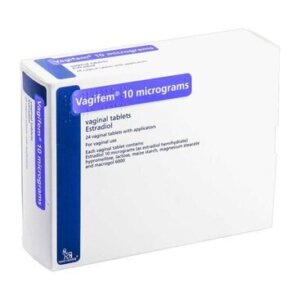December 2023 brought the usual burst of exciting news related to health, pharmaceuticals, and treatments. As usual, throughout the month, many announcements appeared on news websites that bring updates to the general public, and we are trying to pick out items that can be relevant to you based on our own experience from reader feedback. In this issue, we have grouped together a few related items, so keep reading through – it can be that more than one of these snippets of news is relevant to you.
GLP-1 diabetic medications are safe to use during early pregnancy
JAMA Internal Medicine is an international peer-reviewed journal offering a reliable source of peer-reviewed articles covering various topics related to healthcare, medical treatments, and medications. In December 2023, it published the results of joint research conducted across many highly-regarded medical facilities, including Karolinska Institute, Stockholm, Sweden; Maccabitech Institute for Research and Innovation, Israel; Stanford University School of Medicine, Stanford, California; and Norwegian Institute of Public Health, Oslo, Norway.
The study posed the question, “Is periconceptional use of glucagon-like peptide 1 (GLP-1) receptor agonists or other noninsulin second-line antidiabetic medications (ADMs) associated with increased risk of major congenital malformations?” Putting that into layman’s terms, it is asking whether there is any evidence that the use of non-insulin-based treatments for type 2 diabetes during early pregnancy can increase the risk of deformities in unborn babies.
The main reason why a study such as this is vital is because of the tremendous increase in the use of highly effective alternative treatments for diabetes that are not based on insulin itself. In medical terms, these are known as second-line non-insulin antidiabetic medications (ADMs). Drugs such as Ozempic and Mounjaro that are based on glucagon-like peptide 1 (GLP-1) receptor agonists, and Jardiance, Steglatro, and Farxiga are based on sodium-glucose co-transporter-2 (SGLT2) inhibitors have become powerful tools in the clinical repertoire for treatment of cases of type 2 diabetes in which standard treatment has proven inadequate to control blood sugar levels. Doctors have found that there are other benefits from GLP-1 and SGLT2 meds in the area of weight loss and are prescribing these drugs off-label increasingly for overweight and obese patients. Read more about how doctors can use existing approved medications in treating different conditions (what we talk about repeatedly as off-label prescribing), and this could prompt a discussion with your own healthcare providers to see if these new steps apply to you.
Another reason for pushing ahead with this study came from the increasing possibility that women of reproductive age who were already receiving one of these forms of treatment could fall pregnant, and the possibility of damage to the fetus needs to be clarified since they could have already passed beyond the first trimester before the certainty of the pregnancy could be established.
The pool of data that was analyzed covered more than 50,000 pregnant women from six large population-based healthcare databases from four Nordic countries, plus the US and Israel. These women had to have been diagnosed as having type 2 diabetes and been treated either with insulin or with at least one course of second-line non-insulin ADMs during the first trimester of pregnancy. The health of the babies was followed for a year after birth. The study picked out the presence of major congenital malformations (MCMs) or major cardiac malformations and compared the risk of MCMs after exposure to second-line noninsulin ADM classes with insulin.
The conclusion based on this study is that there is no observed increase in the risk of a fetus developing major congenital malformations or significant cardiac malformations in the first trimester of pregnancy when the mother is being treated with second-line non-insulin ADMs for type 2 diabetes.
Treatment news for female sexual dysfunction
Medscape is a platform that provides a wide range of articles related to medicine and healthcare, including the latest medical news, clinical trial coverage, and drug information covering the latest updates and developments.
In December 2023, the journal summarized a presentation at the French Urology Association’s 2023 conference, focusing on the need for doctors to be more involved in female sexual health. As one of the authors of the French study says, “We need to spot sexual dysfunction because the topic is rarely broached spontaneously by female patients and even less so by healthcare workers.”
This is of interest as it speaks to how doctors in December 2023 are seeing the same need concerning opening the window for women to talk more comfortably about sexual health, as we have covered in several blogs that focus on the need for men to be able to find ways of openly discussing their sexual health. As we shared in The culture of shame and sexual performance and Answering your questions about sexual performance problems, there has been a gap between the male population and their healthcare providers that resulted in reluctance on both sides to bring up the subject of sexual performance and general sexual health.
The subject of the new presentation shows that female sexual health has been requiring some of the same attention. We can at least approach the subject of female sexual issues with some pride since we have on several occasions brought up the need for more open discussion, most notably in our article on Vaginal health and sexual fulfillment and The myth of declining sexual pleasure after menopause, which both threw light on the issues that women face when trying to address their sexuality.
A key takeaway is that the primary types of therapy that might be proposed for sexual dysfunction involve either cognitive behavioral therapy (CBT) specific medications or the two in combination.
The primary aim of CBT in the context of sexual dysfunction is to identify and modify thought patterns, beliefs, and behaviors that may contribute to sexual problems.
Drug treatments have so far had mixed results. Phosphodiesterase 5 (PDE-5) inhibitors have worked wonders in men who suffered from erectile dysfunction (read all about the “little blue pill” and the other derivatives in our article How Viagra came to be a treatment for Erectile Dysfunction), but they have produced disappointing results in women.
One exciting possibility raised is the use of testosterone as a way of increasing sexual desire. As we wrote in the article on vaginal health, testosterone plays a role in female reproductive and sexual function. As women age through their reproductive years, there is an overall decrease in levels of testosterone produced in the ovaries, which play an essential role in sexual motivation in women. Consequently, older women may experience hypoactive sexual desire disorder (HSDD), which reflects changes in sexual arousal and desire, the ability to reach orgasm, pain from intercourse, and the absence of desire for sexual activity.
“White lung syndrome” isn’t caused by a virus.
Perhaps the memory of the burst of the novel disease COVID-19 out of China in early 2020 has given rise to a sense of fear that it could be happening again, as cases of white lung pneumonia have been reported both in the US and in China. However, according to reliable sources here in the US since the beginning of December 2023, including professors at reputable medical facilities such as Vanderbilt University Medical Center and the University of Texas Dell Medical School, “white lung syndrome” is not substantially different from the forms of pneumonia that developed in previous years.
“White lung syndrome” describes a particular type of pneumonia, primarily affecting children, with the term derived from the appearance of whitened patches on the affected lungs in X-rays due to special characteristics of this specific form of pneumonia. It has been reported in multiple countries, including China and Denmark, as well as several states here in the US. Just as in 2019, when the information coming out of China was obtuse and unreliable, in December 2023, there does not appear to be a direct link between the bacteria causing white lung syndrome here in the States and whatever is causing it in China. In the US, it has been traced back to strains of pneumonia that already circulated in the US in prior years.
It has been associated with mycoplasma pneumonia, a bacterial infection. Mycoplasma pneumonia is known to cause a range of respiratory symptoms and can affect both children and adults. So, “white lung syndrome” is a specific manifestation of bacterial-induced infection and has nothing to do with viruses.
Mycoplasma pneumonia is a bacteria that can cause mild infections by damaging the lining of the respiratory system, according to the Centers for Disease Control and Prevention (CDC) in December 2023. Around two million cases are recorded each year in the US. The bacteria is spread through coughs and sneezes and is usually spread between people spending significant periods indoors in heated enclosures, such as during winter months in households, schools, community facilities, retirement homes, and hospitals. If it lodges in the lungs, the infection can lead to pneumonia. In most cases, people are treated with antibiotics and can recover at home.
The most important thing to keep in mind is that babies and children are most susceptible to the development of the more serious forms of mycoplasma pneumonia. This makes it important for parents and childminders to keep from getting infected because even though they may be able to fight off the infections, their wards could be far more seriously affected.
The takeaway is to adopt the same precautionary methods that have worked in the past four years against cross-infection by COVID-19. If you spend time in close contact indoors with other people, setting up a barrier to prevent the infection from reaching your lungs is the best protection. Enovid spray has proven to be 99% effective in preventing foreign invaders from reaching the lungs through the nasal passages. It is a simple barrier you can carry in your pocket, working for up to five hours after each spray to line the nasal paths with nitric oxide, the “hand sanitizer for the nose.”



















